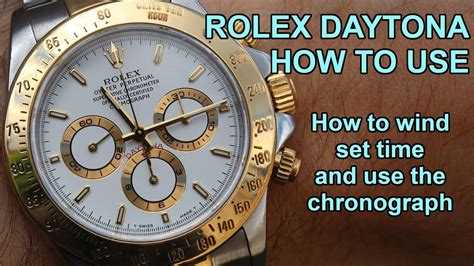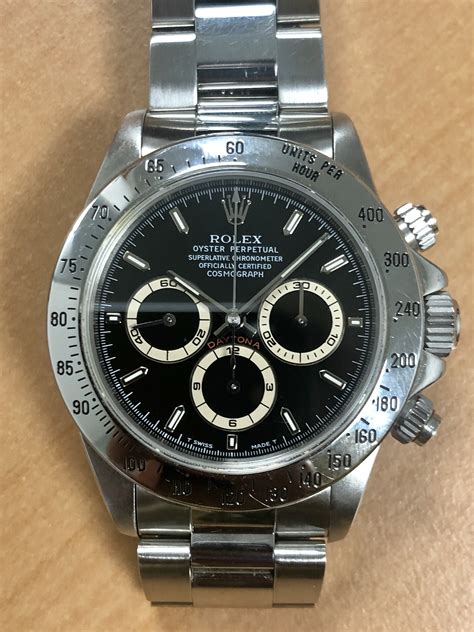when did rolex daytona stop using zenith movement | Rolex daytona dials explained when did rolex daytona stop using zenith movement With the new millennium on the horizon, the Rolex Daytona was the only model in the brand’s portfolio reliant on a third-party movement, and it was a situation that could not possibly last. After . See more 1 talking about this. Cālis.lv - Pirmais Latvijas ģimenes portāls! Šeit - par Cāļa ikdienu un jaunumiem portālā!Email Us. Need some help with Contacting us? Find all your Casino Games, Slots, Table Games and Cryptocurrency questions answered at Slots.lv Help Center.
0 · explain the Rolex daytonas operations
1 · Rolex watch 16520 price
2 · Rolex submariner 16520 price
3 · Rolex daytona zenith price
4 · Rolex daytona dials explained
5 · Rolex daytona caliber 4130
6 · Rolex daytona 16520 for sale
7 · Rolex 16520 daytona collectable guide
All Mercon fluids are incompatible with Mercon LV. Despite not being combined with Mercon V, Mercon LV can still be used with older GM Dexron on transmissions. This is because these transmissions require them to be customized to meet their demands. In contrast, Mercon V is typically used for Ford automatic transmissions.
explain the Rolex daytonas operations
The battle to create the world’s first automatically-winding mechanical chronograph movement ended in a sort of three-way tie in 1969. The competitors – Seiko in Japan and two Swiss entrants: Zenith (teaming up with fellow countrymen Movado) and a consortium called the Chronomatic Group (consisting of Heuer, . See moreThe reason it took so long for the new Daytona to come out following the two companies forming an alliance is because Rolex’s engineers gave the El Primero a severe going-over before fitting it . See more
With the new millennium on the horizon, the Rolex Daytona was the only model in the brand’s portfolio reliant on a third-party movement, and it was a situation that could not possibly last. After . See more
sac a main michael kors qubec
In fact, early Rolex Daytona references relied on Valjoux-based, manually-wound movements, and the collection's first self-winding caliber was based on a design from Zenith, rather than .In 2000, just 12 years after the release of the Zenith Daytona, the Rolex 116520 was introduced, which marked the long-awaited introduction of a true in-house movement to the Rolex Daytona. This movement served Rolex well for 12 years until, in 2000, Rolex launched its own in-house movement, the Calibre 4130, which powered the next generation, new-millennium . In 1988, Rolex switched began using the Zenith-produced El Primero automatic movement, which is famous for having been one of the first automatic chronograph calibers .
The Daytona became a self-winding watch when Rolex began equipping it with Caliber 4030, a modified Zenith El Primero. This movement was used in Reference 6264 from . The Zenith El Primero movement was introduced in 1969, and it was the first integrated automatic chronograph movement in the world, featuring a high-frequency .
The Zenith Era, spanning from 1988 to 2000, marked a significant chapter in the Rolex Daytona’s history as the brand introduced the Caliber 4030, based on the renowned Zenith-produced El Primero automatic movement. While Rolex did introduce the platinum Daytona ref. 116506 in 2013 to mark the 50th anniversary of the model, the earlier generation “Zenith” Daytona in platinum has long .
Well, with the apparent outer design differences aside these two watches were originally running on a very similar mechanical movement, created by Zenith and named 3019 .The first automatic winding Rolex Daytona was powered by a modified Zenith movement. In terms of the overall winner in a closely-run race, most experts give the title to Zenith. Unfortunately, the self-winding chronograph movement was perfected just in time to coincide with the quartz crisis, which bankrupted nearly two-thirds of Switzerland .In fact, early Rolex Daytona references relied on Valjoux-based, manually-wound movements, and the collection's first self-winding caliber was based on a design from Zenith, rather than being one of Rolex's own creations.In 2000, just 12 years after the release of the Zenith Daytona, the Rolex 116520 was introduced, which marked the long-awaited introduction of a true in-house movement to the Rolex Daytona.
This movement served Rolex well for 12 years until, in 2000, Rolex launched its own in-house movement, the Calibre 4130, which powered the next generation, new-millennium 1165xx line of watches. It was this watch that began the . In 1988, Rolex switched began using the Zenith-produced El Primero automatic movement, which is famous for having been one of the first automatic chronograph calibers upon its release in 1969 .
The Daytona became a self-winding watch when Rolex began equipping it with Caliber 4030, a modified Zenith El Primero. This movement was used in Reference 6264 from 1970 to 1972. Unlike the 6262, Reference 6264 had a .
The Zenith El Primero movement was introduced in 1969, and it was the first integrated automatic chronograph movement in the world, featuring a high-frequency escapement of 36,000 vibrations per hour (VPH), which allows for highly accurate timekeeping.
The Zenith Era, spanning from 1988 to 2000, marked a significant chapter in the Rolex Daytona’s history as the brand introduced the Caliber 4030, based on the renowned Zenith-produced El Primero automatic movement. While Rolex did introduce the platinum Daytona ref. 116506 in 2013 to mark the 50th anniversary of the model, the earlier generation “Zenith” Daytona in platinum has long been the subject of whispered rumours. But it is very real. Well, with the apparent outer design differences aside these two watches were originally running on a very similar mechanical movement, created by Zenith and named 3019 PHC which has now been.The first automatic winding Rolex Daytona was powered by a modified Zenith movement. In terms of the overall winner in a closely-run race, most experts give the title to Zenith. Unfortunately, the self-winding chronograph movement was perfected just in time to coincide with the quartz crisis, which bankrupted nearly two-thirds of Switzerland .

In fact, early Rolex Daytona references relied on Valjoux-based, manually-wound movements, and the collection's first self-winding caliber was based on a design from Zenith, rather than being one of Rolex's own creations.In 2000, just 12 years after the release of the Zenith Daytona, the Rolex 116520 was introduced, which marked the long-awaited introduction of a true in-house movement to the Rolex Daytona. This movement served Rolex well for 12 years until, in 2000, Rolex launched its own in-house movement, the Calibre 4130, which powered the next generation, new-millennium 1165xx line of watches. It was this watch that began the .
In 1988, Rolex switched began using the Zenith-produced El Primero automatic movement, which is famous for having been one of the first automatic chronograph calibers upon its release in 1969 . The Daytona became a self-winding watch when Rolex began equipping it with Caliber 4030, a modified Zenith El Primero. This movement was used in Reference 6264 from 1970 to 1972. Unlike the 6262, Reference 6264 had a .
The Zenith El Primero movement was introduced in 1969, and it was the first integrated automatic chronograph movement in the world, featuring a high-frequency escapement of 36,000 vibrations per hour (VPH), which allows for highly accurate timekeeping. The Zenith Era, spanning from 1988 to 2000, marked a significant chapter in the Rolex Daytona’s history as the brand introduced the Caliber 4030, based on the renowned Zenith-produced El Primero automatic movement.
While Rolex did introduce the platinum Daytona ref. 116506 in 2013 to mark the 50th anniversary of the model, the earlier generation “Zenith” Daytona in platinum has long been the subject of whispered rumours. But it is very real.

sac a main logo michael kors look
The direct drive from Las Vegas to Cambria is 423 mi (680 km), and should have a drive time of 7 hrs 22 mins in normal traffic.
when did rolex daytona stop using zenith movement|Rolex daytona dials explained

























